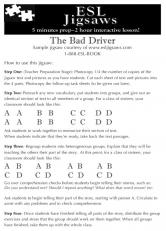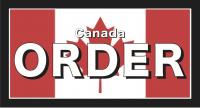ESL Jigsaws
5 Minutes Prep - 2 Hour Interactive Lesson!
Viewing entries tagged with 'free'
Father's Day Reading for Low Beginners
Not all countries celebrate Father's Day (or even Mother's Day) so it's a nice tradition to teach students about. If you have adult students, even if they don't plan to celebrate, they may be surprised to get a card their son or daughter has made in elementary school.
Field Testing Callan's Beginner Essentials
Field testing will be completed circa May 1, 2018.
Make Canada Study Come Alive
Making your study of Canada for beginner and intermediate ESL come alive is easy with the use of some supplemental materials, like pictures, video and songs. Over the years I have collected about 15 images per province or territory from free Canada calendars, depicting such things as wheat fields, fishing villages, salmon, Douglas Fir trees and igloos that perfectly illustrate aspects of the jigsaws in Callan’s Beginner Canada Jigsaws or Callan’s Canada Jigsaws. I also like to use the video Destination Canada, found in most tourist shops. I show the section of the video related to a given province or territory, either with the sound off and my own narration for lower levels or with the sound on for higher levels.
Decorate Your Classroom with Affirmations
If you have been off for the summer or part of it, soon it will be time to return to classes. Maybe you are thinking about decorating your classroom. Why not give it a makeover with some affirmations? Our subconscious mind is bombarded with so many messages throughout the day, many of them negative. Affirmations give your subconscious mind new more positive messages to believe in. They literally re-program the mind.
Telephone Voice Mail Messages
Many new immigrants answer the phone in their own language. A Korean immigrant might answer, "Yabusayo?" A Chinese immigrant might answer, "Wei?" Often their thinking is that most people who call them speak their language anyway and those who don't will understand that they are simply answering in their own language.
Environmental Jigsaw for Higher Levels
When choosing a jigsaw that is appropriate for the level of your class, it’s important to remember that jigsaws are not passive reading exercises. These four skills lessons require the students to not only read their part, but to teach it to their classmates. Pronunciation and listening skills are key.
Coins and Bills for Low Beginners
As tax season approaches, we often teach a unit on money. With low beginners, I structure my unit around learning numbers, counting, asking and saying prices, the names of bills and coins, and finally the task of asking for change. I've put together some exercises for Canadian and American teachers on asking for change.
Charter of Rights and Freedoms
Discussion of the Canadian Charter of Rights and Freedoms can make for an interesting lesson in an intermediate ESL class. Students often assume freedom of expression is the right to say anything about any person or about the government. Here’s where you can let them know about libel laws and Canada’s Hate Speech Laws. Unlike the United States, the Criminal Code of Canada prevents “hate propaganda”. Is this a good thing? Why do we have those laws?
Fieldtrip to the Dentist
In adult immigrant ESL classes, within a health unit, many teachers touch on the subject of dental care. I highly recommend a visit to an actual dentist’s office, if you can arrange it. My dentist Dr. Marcy Schwartzman was kind enough to allow a visit to her dental clinic for my intermediate ESL students, many of whom had never been to a dentist in their lives.
Teaching About Christmas?
Imagine you are teaching abroad for a year in the country of Slavarnia, spending part of your time in classes learning the language of Slavar. It's not a real country so follow along with this hypothetical example. The biggest holiday of the year is called Glistin. Stores close and there are two statutory holidays associated. Hallmark has commercialized Glistin significantly, creating a large gift giving fairy as the main character. But actually, the roots of the holiday are religious. When the subject of the holiday comes up in class, you read and played games centred around the Hallmark fairy, but learn nothing about the historical and religious origins of the holiday. Apparently, the school is concerned about religious proselytizing and so keeps the focus on the secular aspects. As a result, you remain in the dark about half of the holiday's significance. You have no interest in converting your religion, but just want to understand what is behind the holiday.


